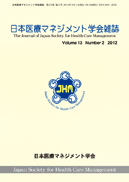Volume 20, Issue 4
Displaying 1-8 of 8 articles from this issue
- |<
- <
- 1
- >
- >|
Original Articles
-
Article type: Original Articles
2020 Volume 20 Issue 4 Pages 164-168
Published: March 01, 2020
Released on J-STAGE: November 21, 2024
Download PDF (685K) -
Article type: Original Articles
2020 Volume 20 Issue 4 Pages 169-174
Published: March 01, 2020
Released on J-STAGE: November 21, 2024
Download PDF (776K)
Case Reports
-
Article type: Case Reports
2020 Volume 20 Issue 4 Pages 175-178
Published: March 01, 2020
Released on J-STAGE: November 21, 2024
Download PDF (538K) -
Article type: Case Reports
2020 Volume 20 Issue 4 Pages 179-182
Published: March 01, 2020
Released on J-STAGE: November 21, 2024
Download PDF (1578K) -
Article type: Case Reports
2020 Volume 20 Issue 4 Pages 183-188
Published: March 01, 2020
Released on J-STAGE: November 21, 2024
Download PDF (710K) -
Article type: Case Reports
2020 Volume 20 Issue 4 Pages 189-193
Published: March 01, 2020
Released on J-STAGE: November 21, 2024
Download PDF (2121K) -
Article type: Case Reports
2020 Volume 20 Issue 4 Pages 194-198
Published: March 01, 2020
Released on J-STAGE: November 21, 2024
Download PDF (835K) -
Article type: Case Reports
2020 Volume 20 Issue 4 Pages 199-204
Published: March 01, 2020
Released on J-STAGE: November 21, 2024
Download PDF (868K)
- |<
- <
- 1
- >
- >|
